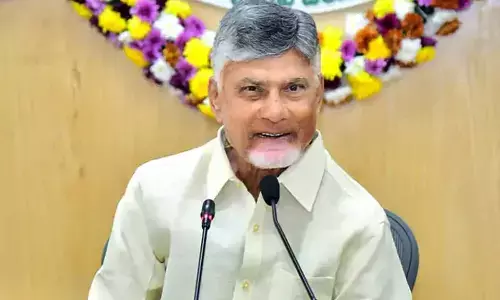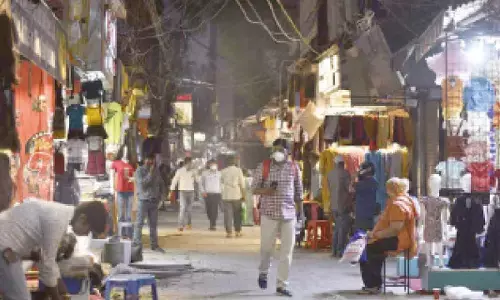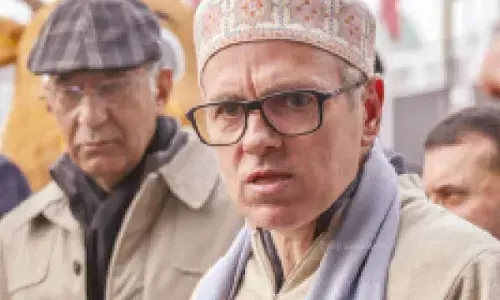Betrayal of Telangana by its own leaders

Betrayal of Telangana By Its Own Leaders, Creation of Telangana, Formation of Telangana. Last night I attended a function about release of a book “States’ Reorganization-A case study of Andhra Pradesh” written by Capt.L.Pandu Ranga Reddy. One of the speakers, Zaheeeruddin Ali Khan, Editor of a Urdu daily, Siasat while talking about the book felt that there should have been a separate chapter in the book on “failure of Telengana leadership to safeguard the interests of people after the formation of Andhra Pradesh” which led to the agitation for a separate statehood.
Last night I attended a function about release of a book “States’ Reorganization-A case study of Andhra Pradesh” written by Capt.L.Pandu Ranga Reddy. One of the speakers, Zaheeeruddin Ali Khan, Editor of a Urdu daily, Siasat while talking about the book felt that there should have been a separate chapter in the book on “failure of Telengana leadership to safeguard the interests of people after the formation of Andhra Pradesh” which led to the agitation for a separate statehood.
This prompted me to think and write few lines on the subject. The pathetic tale of Telangana is not only a long story of paralyzed promises of Andhra Pradesh, but also a betrayal by its own leaders. The Telangana people opposed the idea of merger right from 1952 with Non-Mulki agitation.
Even Fazal Ali commission's SRC in page 101, Para 378 recommended that Telangana remain a separate state and clearly stated - "The real fears of the people of Telangana is that if they join Andhra they will be unequally placed in relation to the people of Andhra and in this partnership the major partner will derive all the advantages immediately, while Telangana, itself may be converted into a colony by the enterprising coastal Andhra."
Inspite of this, Andhra legislature lobbied for the merger and it assured that it would put enough safeguards in place to alley Telangana fears of losing jobs, land, water and financial resources. In that context, Telangana's merger with Andhra state in 1956 was a conditional one with safeguards, in form of Gentlemen agreement, attached to protect itself from the majority of Andhairites who are comparatively well educated.
The betrayal of Telengana region by its own leaders started on the very same day of its unification with Andhra state by not questioning violation of gentlemen agreement. It is also pertinent to recollect the violation of this agreement by the first chief minister of Andhra Pradesh, Neelam Sanjeeva reddy ridiculing the post of Deputy Chief ministership as sixth finger and thus useless. However, he served as Deputy Chief Minister of Andhra state in Bezawada Gopal Reddy’s cabinet till a day before Andhra Pradesh formation and then the post became ridiculous to him.
It was one of the gentlemen agreement point that was violated on the very first day of formation of Andhra Pradesh and no Telengana leader raised any objection inspite of the fact that, the six-point alone was the basis for state formation.The ‘Gentlemen agreement’, was a historical blunder that was never respected either in letter or in spirit. The gentlemen were individuals under the control of Congress party coterie which thought it would remain in power for all time and thus played a dubious role so as to bulldoze the aspirations of Telangana people.
.jpg)
Then battle for separation of Telangana from Andhra Pradesh erupted in 1969 where in over 350 students died in police firing. Many students including a medico, Mallikarjun e emerged as student leaders and it was an open secret that politicians from behind the scenes were managing the student union leaders. After Marri Chenna Reddy was removed from Central cabinet following Supreme Court’s disqualification from the MP post, he hijacked the Telangana Praja Samiti (TPS) movement of students and TNGOs replaced its first president A.Madanmohan and led it to its successful end.
Subsequently, this movement born party secured the popular mandate in terms of winning 11 Lok Sabha seats out of 14 seats, swimming across all the currents against the entrenched Congress and the Communists, from the region. However, he failed to take on the all powerful Indira Gandhi, and settled for personal rehabilitation and favours of the Prime Minister along with an eight-point plan on April 12, 1969. Thus he surrendered all the TPS’ MPs to Indira Gandhi for few crumbs and thereby sabotaged the movement once for all. However, there was not much noise raised against the act of betrayal, from any quarter including the followers of the TPS. It was a big blow to the generation of the times, which forgot all about the movement following its failure.
Fifteen years after merger, then not a popular leader in Telengana, P.V.Narasimha Rao, who remained as an integrationist throughout the movement was made Chief Minister. Later, two other leaders from Telengana, Jalagam Vengal Rao and Marri Chenna Reddy became Chief Ministers of Andfhra Pradesh. None of them paid attention to the implementation of gentlemen agreement or equitable distribution of resources. People realized that politicians would take them for a ride and benefit from their movement which was the outcome of injustice meted out to the region by successive governments that sought to articulate the demand for a fair share in the resources.
Telengana leaders in ruling party only concentrated on earning berths in the cabinets. Junior leaders like Juvvadi Chokka Rao and K.Achyuth Reddy etc who could not become ministers were made as Chairmen of Telengana Regional Committtee, but instead of protecting the interests of Telengana, they made it as a stepping stone for berth in the cabinet. Powerfull communities, Reddys ansd Kammas were suitably accommodated in elevated positions, political unemployment was taken care and Telengana leaders were satisfied with their share of power.
In the course of controlling power to increase their wealth, the tacit understanding between Kammas and Reddys came to an end and Jai Andhra movement was started in 1972. The Centre settled the issue on September 21, 1973, with a political settlement and a 6-point formula put in place to placate people of the two regions.
In 1985, employees from Telangana region cried foul over appointments of non locals in government and complained about `injustice' done to people of the region. The then Telugu Desam Party government, headed by N T Rama Rao, brought out a G.O.No 610 to safeguard the interests of Telangana people but that was never implemented and none of the Telengana leaders raised a finger aaginst it. Till 1999, there was no demand from any political quarters for division of the state on regional lines and that is why P.V.Narasimha Rao from Telengana could contest and get elected in Nandyal with little opposition.
The Central Working Committee of Congress in 2001 yielded to pressure of Telengana Congress leaders and sent a resolution to the then NDA government seeking constitution of a second States Re-organisation Commission to look into Telangana state demand, which was rejected on the grounds that it was 'neither viable nor conducive' to integrity of the country. There was a need and demand for a political party in 1980s and 1990s also to realize aspirations of Telangana people, but no leader from Telengana was ready to make any sacrifice.
Some people say that Telengana struggle intensified just because Kalvakuntla Chandrasekhar Rao was denied Cabinet berth in the Chandrababu Naidu government of 1999 who walked out of TDP and started building the movement for a separate state. But one must realize that at least he had the courage to quit his post and party. Some Congress leaders who enjoyed power in all Congress governments complain today that it is Seemandhra people who did not implement gentlemen agreement. Konda Laxman Bapuji had the courage to sacrifice and remained out of power for four decades.
Why couldn’t other Telengana leaders from ruling or opposition parties take the dare steps in the interest of people who have elected them? It is unfortunate that for Telengana leaders’ failure to raise objections to enforce rules, we blame Seemandhra people. A common man, irrespective of region tries to take advantage for jobs in whatever ways he can for the sake of his livelihood. It is the responsibility of those in power and important positions to make sure that the agreements and rules are followed properly to ensure justice. Otherwise they should have raised the objections and quit the positions. In essence, Telengana’s real adversary has been political leadership of the region and not Andhras.
What is discernible from these instances is that the leadership is like a double-edged sword, which can ensure success of a movement, or else it can water down the movements as and when they choose to do so. Thus, the leadership is very crucial in any democratic movement. Although the Telangana movement has always been a democratic one, as the popular mandate was recorded on couple of occasions, it is the leadership which played a dubious role. Unless the leaders are exemplary, one cannot expect them to perform better.
There are several examples in India and world over that people and political movements give opportunities to youth to emerge as leaders. They will be elevated during the course of movement and some of them later lead the governments and countries and few even become statesmen. Surprisingly, contrary to this, at various phases of Telangana movement several youth have emerged as leaders but they have failed to sustain and along with political leaders tried to shirk their responsibilities for their acts of collusion with ruling party overtly or covertly.
The fact remains that till date no political consensus has been arrived at on the issue because of vested interests of politicians and political parties. In spite of betrayal by its own leaders. Irrespective of leadership. Telengana movement lasted, in one form or another, for more than four decades. The people’s will is strong and journey has been long but sooner or later destination will be reached.
The opinions expressed in this article are those of the author and do not necessarily reflect the views of the organisation.
Next Story




















